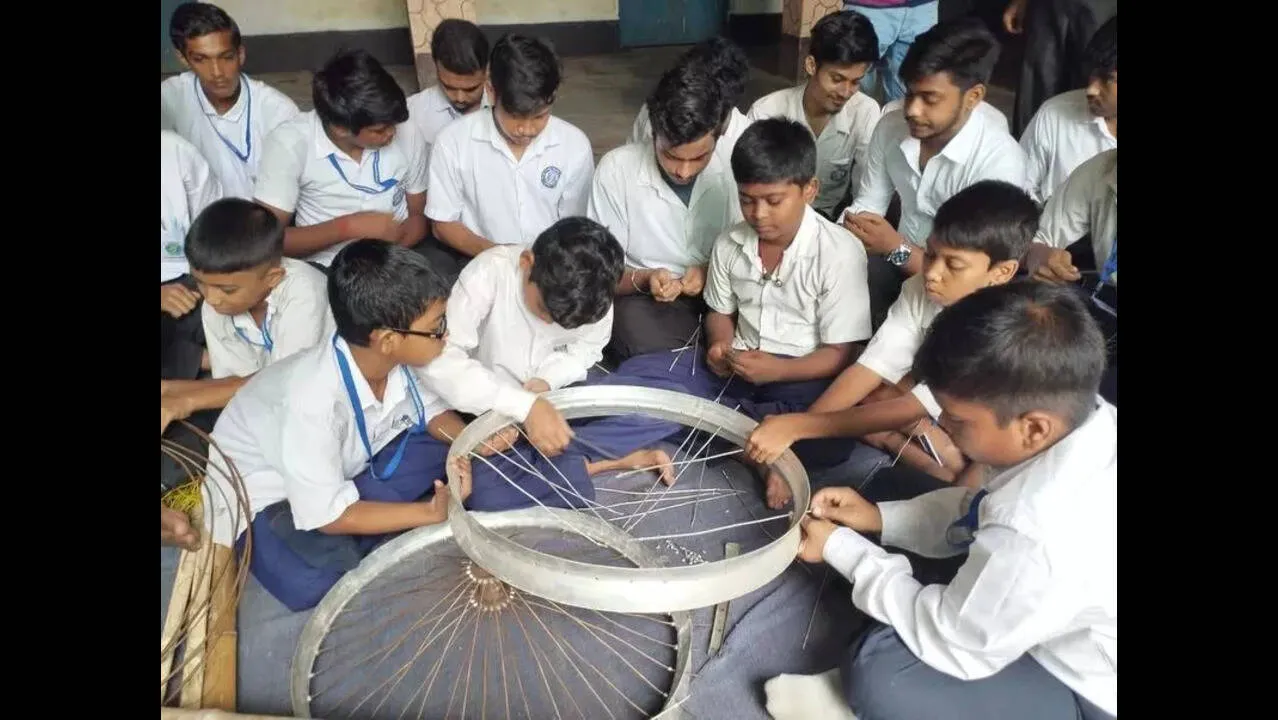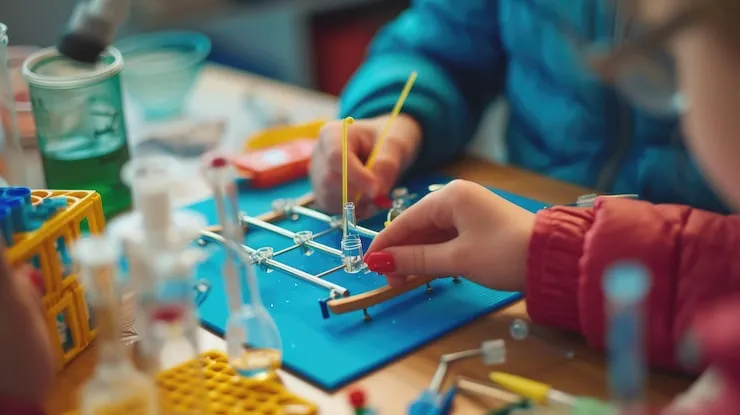A group of schoolchildren in a small West Bengali village accomplished something truly remarkable. With 1,000 and discarded parts, they made a lightning arrester—a tool that protects homes during storms.
This wasn’t a school assignment. It was a curiosity lived. With no fancy labs, they turned junk into a life-saving device. It shows that real ideas don’t need big money—just belief and trying.
Lightning Arrester: What It Is and Why It Matters
Let’s break it down: a lightning arrester is a safety device that:
- Stops houses from catching fire during lightning.
- Keeps gadgets safe—TVs, fridges, wires, fans.
- Channels the electric charge into the ground.
Usually, stores charge 15,000–25,000 for them. But these students built one for under 1,000. All from waste.
Meet the Young Builders
These creators are school students from Class 8 to 10. They’re from humble families, without access to advanced tools. Yet they made headlines with their 1K invention.
They learned from books, online videos, and their teachers. They collected scrap from local spots—nothing was off-limits.
How Does It Work?
Here’s what happens when lightning hits:
- The metal rod on the rooftop takes the charge first.
- That charge is carried by a charged wire that is grounded.
- The ground absorbs the electricity, keeping the home safe.
- This stops fires, blasts, or short circuits.
The students followed basic science principles and tested the setup with the help of a local electrician. It worked just like a store-bought version!
Scraps Used: What They Found and How It Added Up
Here’s exactly what they used and how much it cost:
|
Material |
Source |
Cost |
|
Copper wire |
Discarded fan motors |
0 |
|
Iron rod |
Construction leftovers |
100 |
|
Ceramic insulator |
Old electric poles |
150 |
|
PVC pipe |
Scrap yard |
200 |
|
Earth wire |
Electrician’s donation |
250 |
|
Bolts, tape, fittings |
Local hardware shop |
300 |
Total: About 1,000
With these parts, they assembled and tested the device. Their school was untouched during a recent storm, but residences in the area were damaged.
How It Works: Explained Simply
Here’s the simple science behind the device:
- High above the roof is a metal rod.
- If lightning hits, the rod catches the strike.
- A thick wire leads the charge down.
- The ground absorbs it. No fire. No damage.
The setup worked with the assistance of a local electrician who tested the voltage levels. It worked like big-budget versions—but made from scrap.
How the Kids Taught Themselves
These students had no labs. They:
- Watched free online videos on weekends.
- Read old science books in school.
- Asked teachers every question.
- Tested wires and took small shocks—never quitting.
What began as a school drill turned into a real-saving device for their neighbourhood.
This isn’t just about saving money. It shows what’s possible when kids are curious and determined.
Why This Innovation Is a Big Deal
Here’s why this matters:
- It demonstrates that talent is found throughout India, not just in its cities.
- It shows that hands-on learning is powerful.
- It opens doors for more local solutions in villages.
- It teaches other students that they can also create real change.
Local Buzz: From Village to Headlines
Their story sparked media interest fast:
- Local papers wrote about it.
- Facebook and WhatsApp messages spread the news.
- Education officials praised them on social media.
- Even engineers and teachers called to offer help.
They became local stars overnight.
What Experts Say
Dr. Chatterjee, a retired city engineer, said:
“They did better than many labs. With no training, they built a functioning safety device. It’s outstanding.”
School inspector Mrs. Basu said:
“These children can create more ambitious designs if we support them. Their confidence shines.”
Achievements So Far
Thanks to their work, they have:
- Won a district science prize.
- Got a 10,000 prize, which they used to buy tools for their school.
- Been picked for a state science fair.
- Been invited to speak at an NGO youth event.
Takeaways: What Their Story Teaches Us
Their journey shines a light on what every child—and adult—can learn:
- You can do big things with little.
- Rural minds can leap ahead with the right spark.
- Encouraging hands-on projects in school matters
- Small help can grow huge dreams.
What’s Next: Plans from the Young Team
These inventive kids plan more projects:
- Solar-powered lanterns built from old batteries.
- Low-cost fire alarms from phone parts.
- A DIY kit for homes to build safety tools.
They’ve also started a YouTube channel in Bengali to teach other kids. Their dream: a local science hub run by students.
Closing Thoughts: Honouring the Underdogs
When most kids play games, these Bengal students built life-saving tools. With 1,000, scrap parts, and strong will, they built something that can meet real threats.They assisted their community instead of waiting to be helped. In a time when most kids are on mobile games or social media, these students from Bengal chose to build, think, and solve real problems.
With just 1,000, some waste materials, and loads of energy, they created something that can save lives. Let’s celebrate them, and more importantly, let’s encourage more such minds across India.













